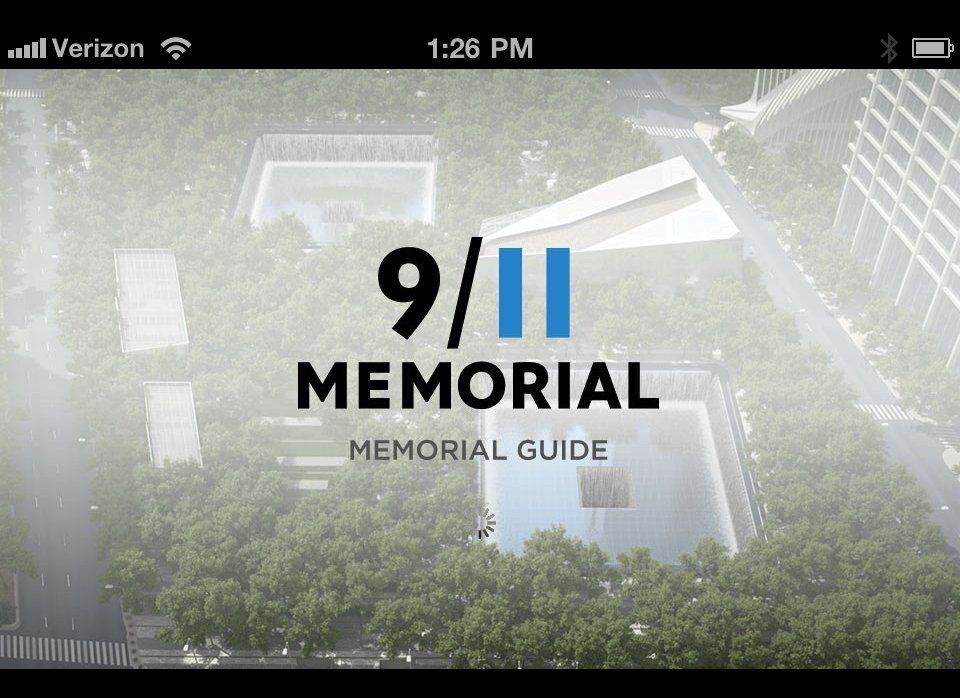
John Vigiano II’s name is one of 2,983 etched into bronze panels at the National September 11 Memorial in Manhattan, a tribute to the thousands who lost their lives 10 years ago at the twin towers, the Pentagon and in Pennsylvania, as well as in the 1993 World Trade Center bombing.
Yet the inscription offers little more about Vigiano. It notes his death, but not the life he lived.
The story of Vigiano as a son, a brother and a third-generation firefighter born in Queens, can be unlocked through a smartphone application developed by the National September 11 Memorial, one of several the organization has released.
The United States witnessed Sept. 11 without iPhones, Facebook or Twitter, but now, the country is harnessing all of these technologies, and more, as it reflects on the catastrophic event 10 years later. These new tools are transforming both how people share their stories of 9/11 and how they commemorate the terrorist attacks -- giving rise to a new breed of e-memorials that exist only online, can be accessed from the palm of a hand and include submissions from anyone who has a story to tell.
The 9/11 Memorial Guide app provides a photo and brief biography for each of the individuals whose names are listed on the monument at Ground Zero, supplementing the physical landmark by offering a view into who these heroes and victims were and how they were connected to the attacks.
Certain profiles also include audio recordings from the family members of the deceased. In these haunting and personal stories, people pause to take deep breaths as they describe their loved ones -- a woman recalls her grandchild aboard flight 175 who she will never watch grow up; a man with a deep voice and Brooklyn accent declares his undying love for his fiance, Karen, who was working at the north tower of the World Trade Center on 9/11.
“You see these names, then you can get additional information about these individuals and feel a personal connection,” said Sean Anderson, the chief technology officer of the National September 11 Memorial and Museum. “The individual becomes not just a name, but a person.”
Through the app, we learn that Vigiano was a firefighter, like his father and grandfather before him, who was killed when the towers collapsed, along with his brother Joseph, a policeman. The Vigiano brothers’ father, John Vigiano Sr., recounts in a grave voice his son John's early ambitions to be “the next Donald Trump,” and Joseph's birthday celebrations at the firehouse as a young boy, where his cake would feature a cut-out of a building lit on fire in place of candles. These are details far beyond what a name etched in metal can provide.
The smartphone application underscores how technology allows for a new type of interactive memorial -- one that is crowdsourced, rather than curated, and is accessible by anyone, anywhere around the world.
“We can take the memorial experience and decouple it from the physical space,” Anderson explained. “We are able to memorialize wherever we are through technology.”
In honor of the tenth anniversary of 9/11, a slew of other companies have also created online archives by soliciting remembrances and testimonials from people around the world. Unlike traditional memorials, there is no physical place to gather, but instead a website to go to. And as opposed to carefully selecting which documents are included for presentation, these domains have been given over to their audiences and feature the stories that users have submitted.
TIME, for example, has created a black-and-white “Twitter-powered memorial wall” that showcases a rotating selection of user-generated tweets tagged “#beyond911.”
Broadcastr, a site that allows users to record two minute spoken messages and tag them to a particular location, is collecting and hosting oral histories about 9/11 that people can submit through Broadcastr’s app or website, at the World Trade Center site, or by calling a phone number (855-937-3636). The audio is then instantly accessible to anyone with an Internet connection.
YouTube has also created a “Reflections on 9/11” channel that highlights videos about Sept. 11 created by journalists, nonprofits, eyewitnesses and the site's userbase at large, which was invited to upload videos that capture their own reactions to the attacks.
Eighteen year-old Joyceelaine Cutliff was among those who heeded YouTube’s call to action, and she described her video, "Reflection: 9/11 And Its Tenth Anniversary," as a way to help herself, and others, make sense of the event.
“I feel like being a young person who is still trying to understand it, it is important to get my voice out there and keep the conversation going,” Cutliff said. “It’s not just a memory. It shaped our lives.”

